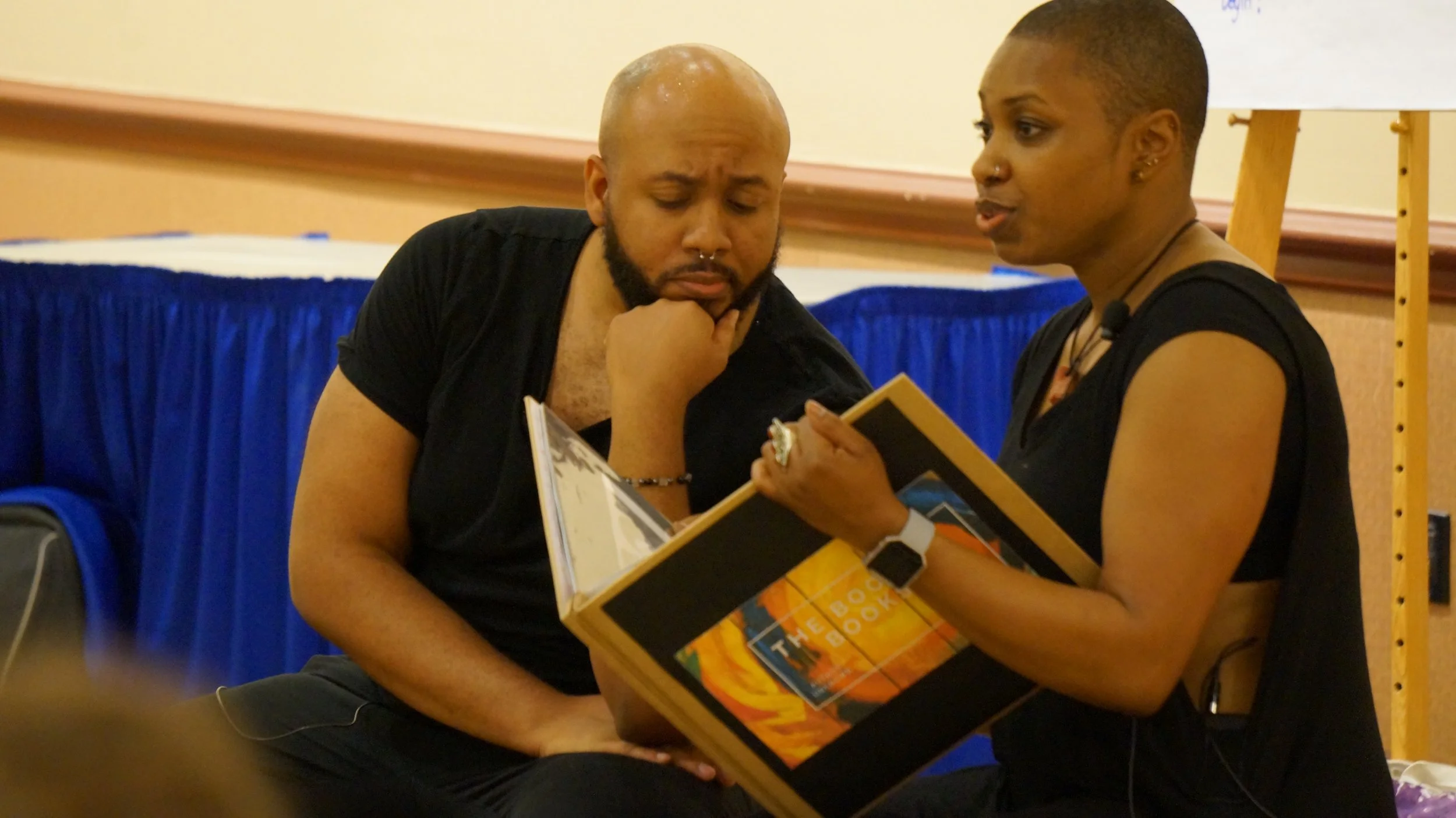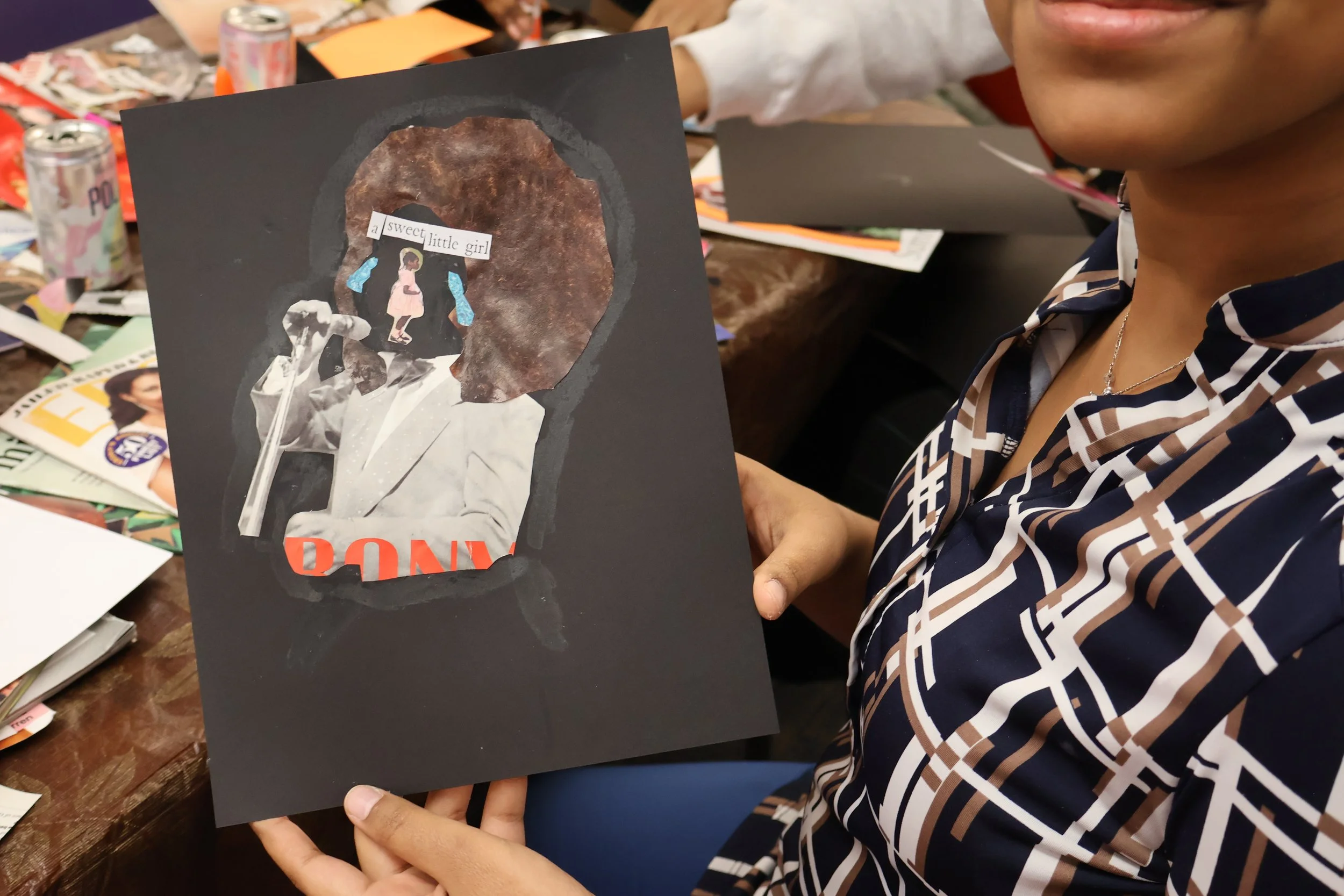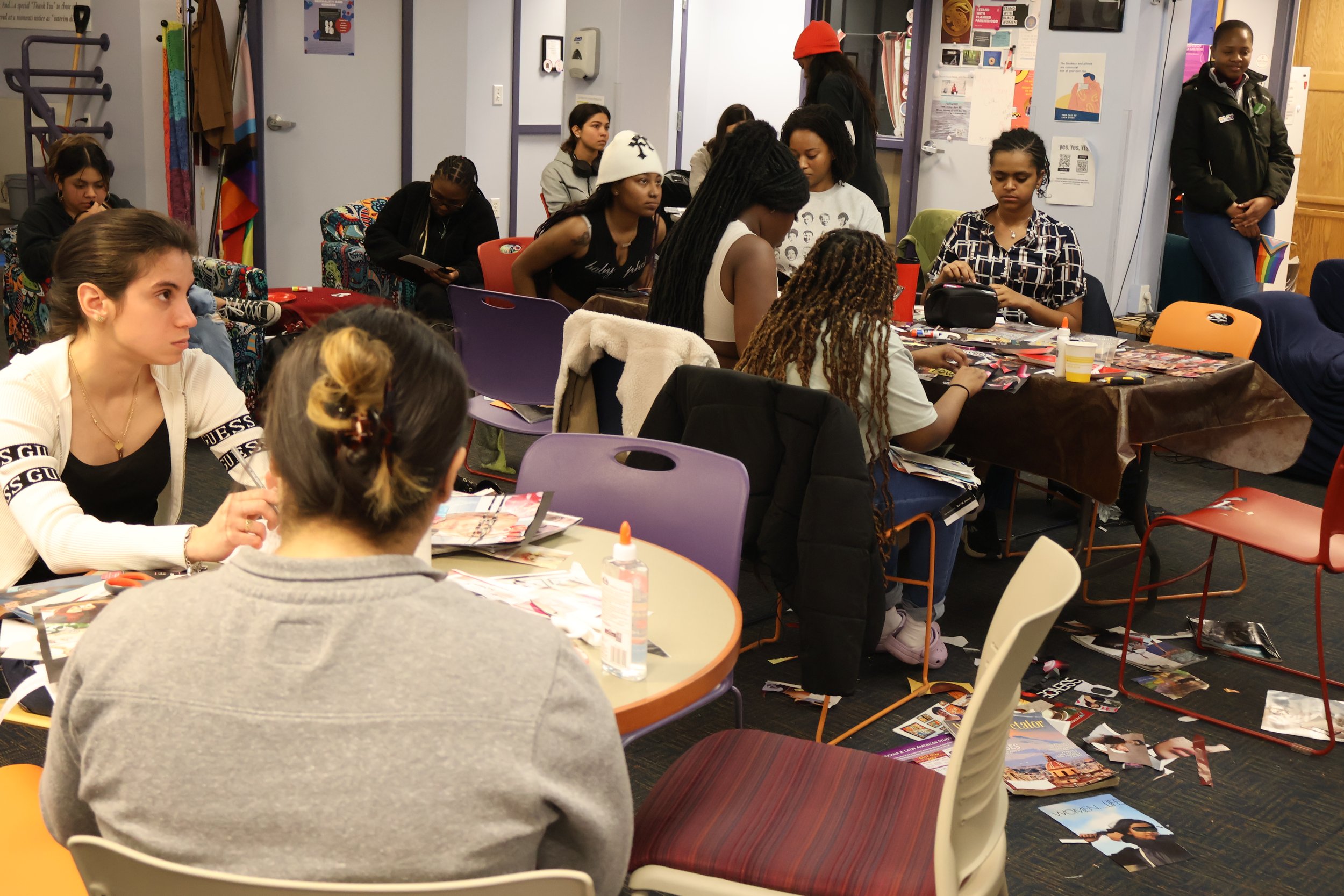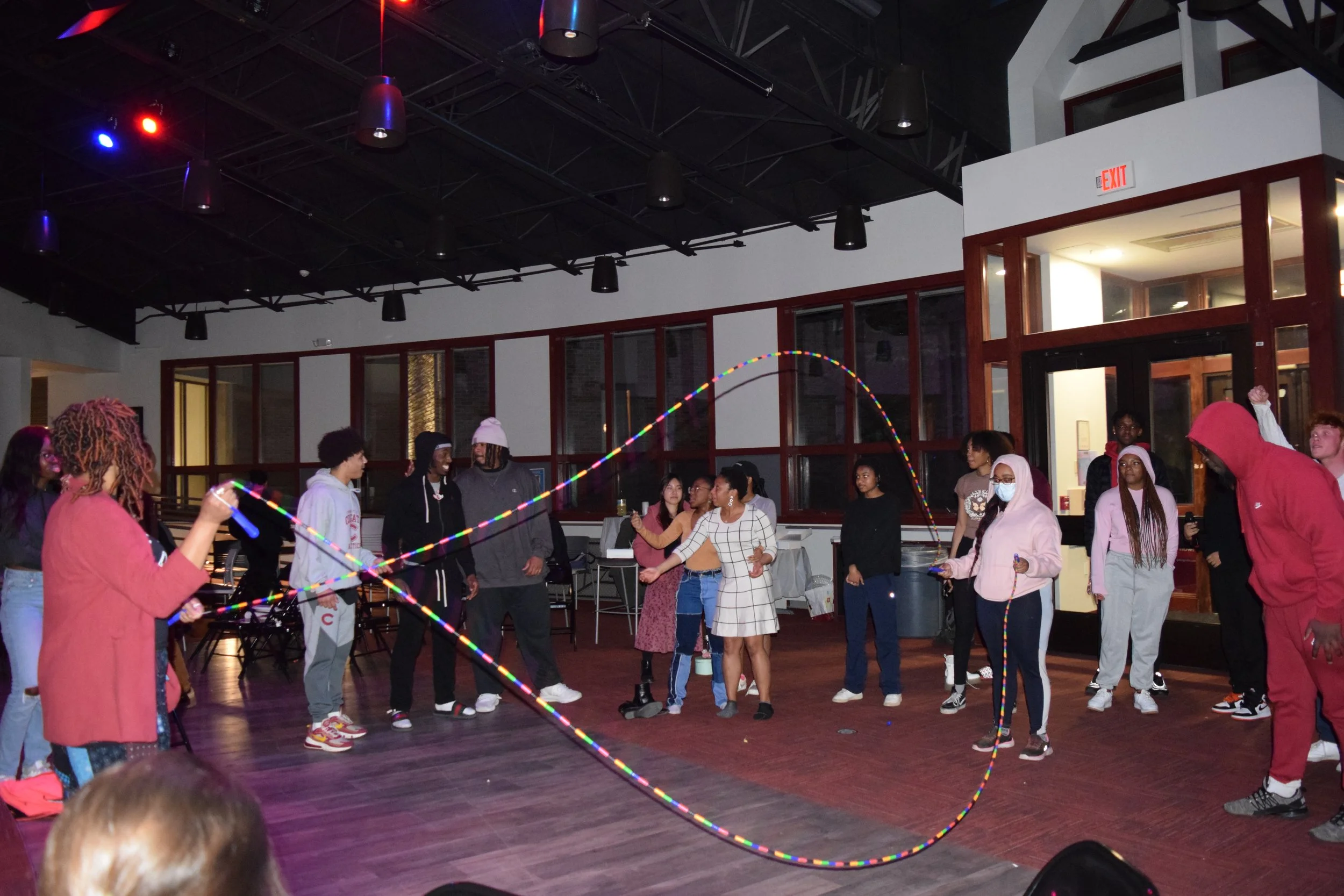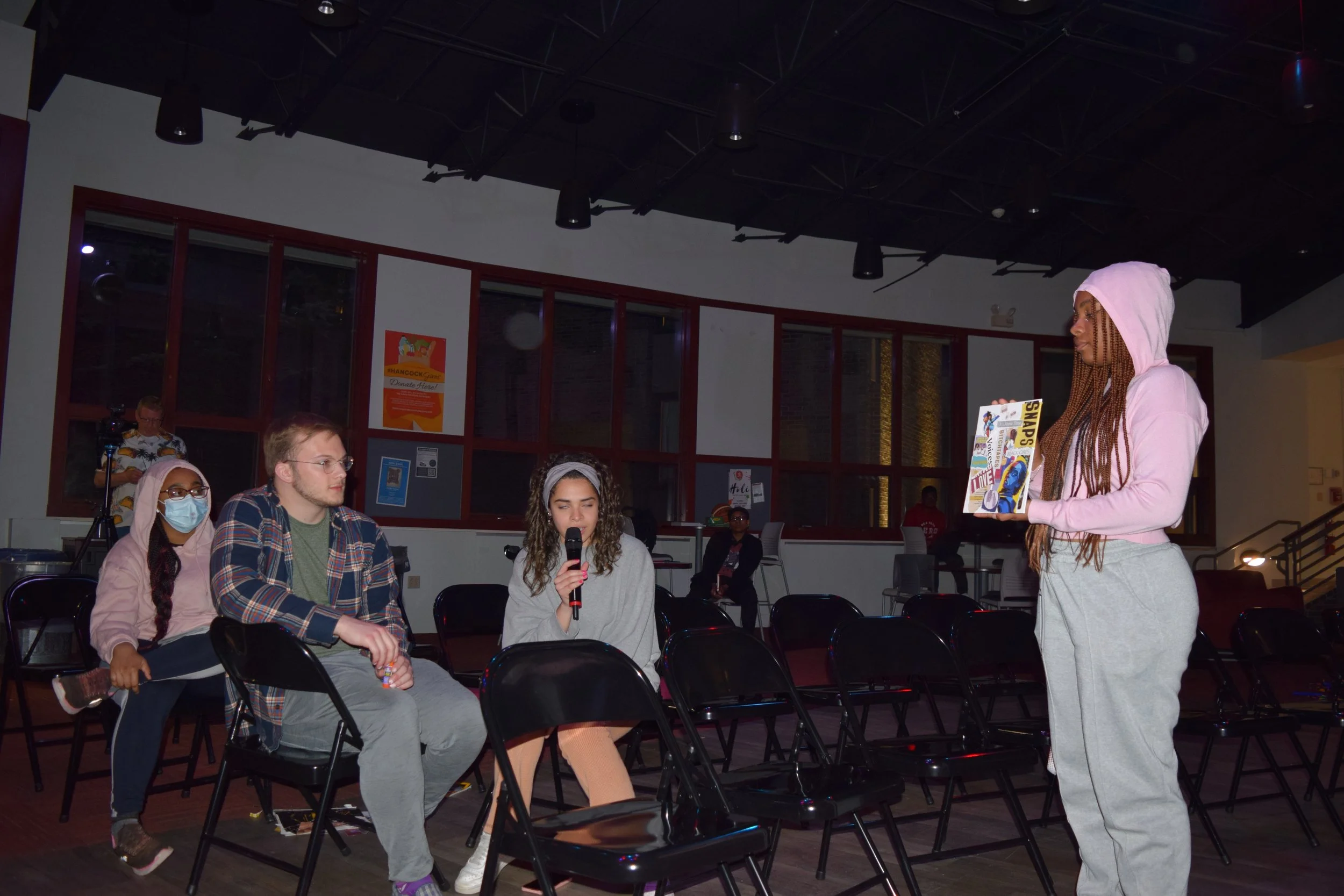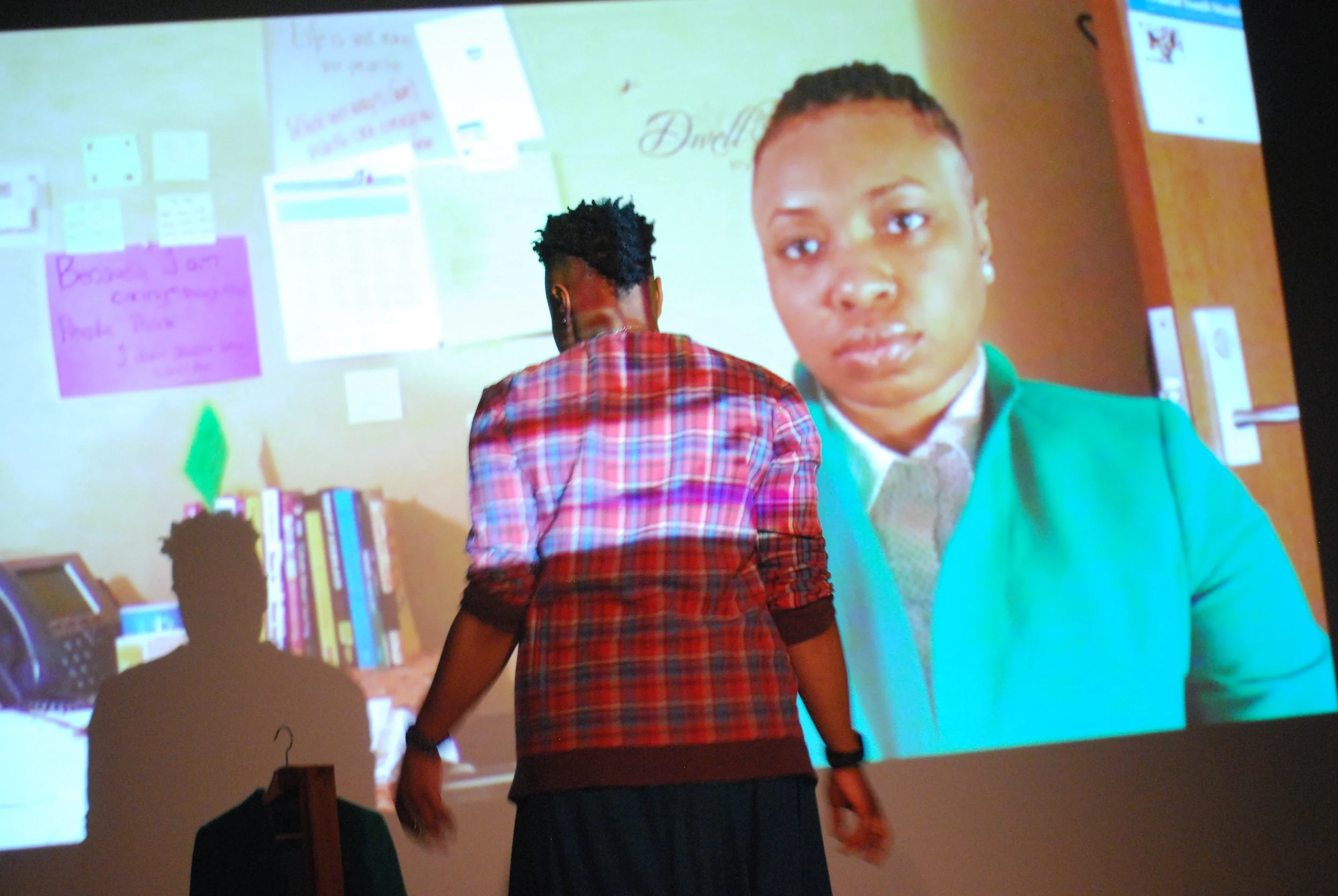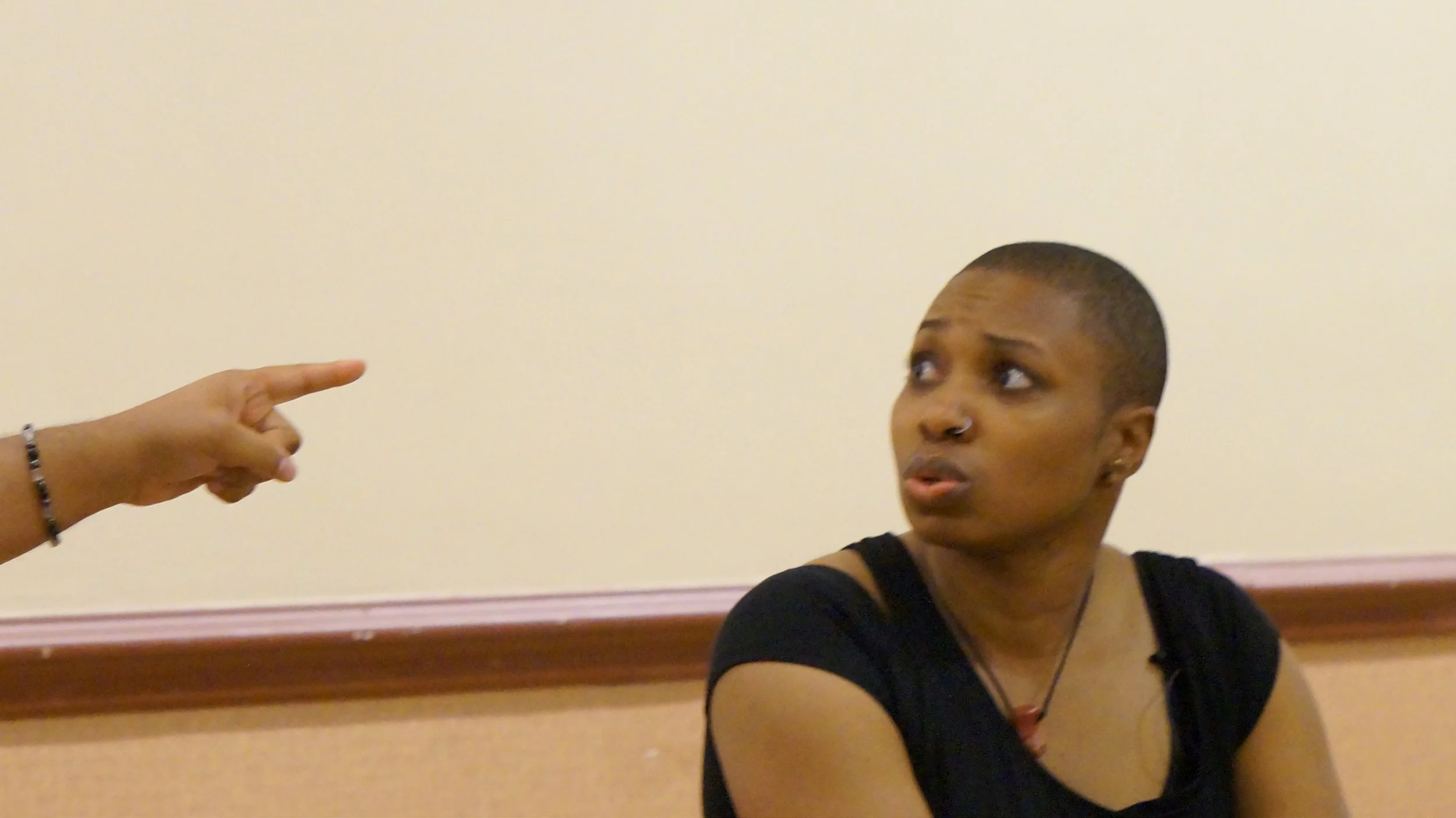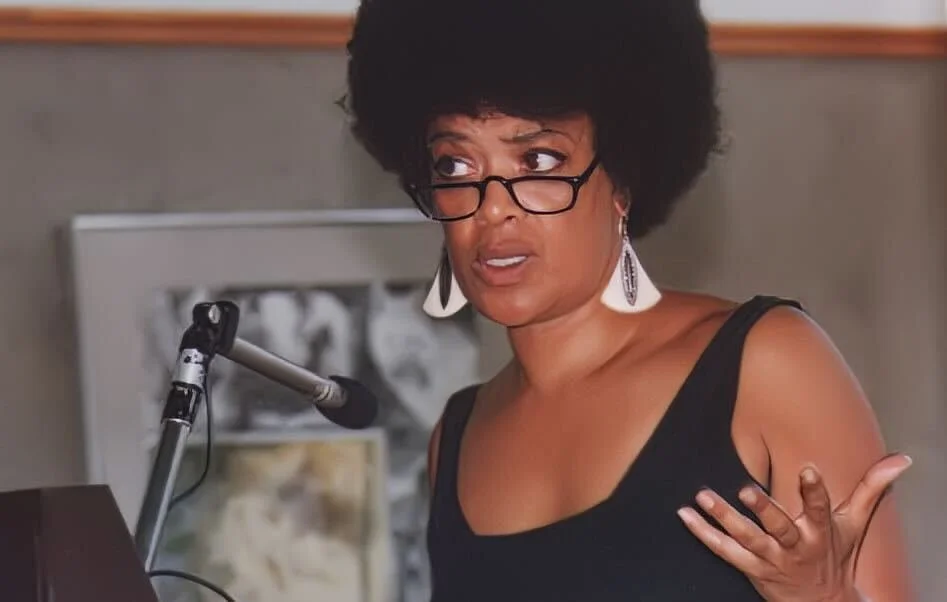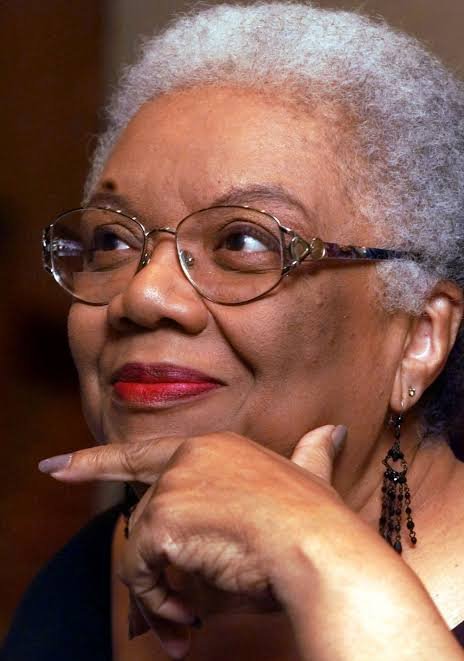Why Scholar-Artist?
I define my work as centering body knowledge and enlarging capacity for honoring difference. With my transdisciplinary scholarship, I intend to uplift subversive truths and theories. I am a cultural worker, mover, and poet. Sometimes I’m working within the walls of the academy as a writer or professor. Sometimes I am breaking the mold of what a scholar is by exploring somatics as spirit work. Most often, I am building unconventional bridges for collaboration between academic studies, cultural ecologies, and local community hubs in order to nourish our Global Body.
Love, Black (Femme) Life, Self-Definition, and Black Queer Visibility are driving factors in my work as a scholar-artist. Black bodies are often misread and not credited for our fluidity or life intelligence, which interferes with how we see ourselves in relationship to each other. By studying embodiment as a Blackqueer lesbian scholar, I am sharing tools for how we bring humanity back into our bodies and how we respond to the state of the planet.
My Mission
Who Is This Work For?
Afterschool and Enrichment Programs
Including advocacy groups, policy makers, and government agencies focused on youth work.
DEI and Professional Development Programs
This can include people looking to create pathways for more meaningful forms of collaboration.
Anyone Defining and Naming
For people who are looking to find more language and understanding in their relationships whether that is a contained definition of community or within the context of larger systems.
People Who Have a Story to Tell
Anyone exploring the value of emotion and body knowledge in their research or finding pieces of themselves that are worth remembering and sharing.
Those Exploring the “How”
Including anyone who wants to explore the “how” of their work and expand their toolkits for better approaching the process.
Intergenerational Spaces
Such as agencies engaged in adult-youth mentorship relationships, mother-daughter programs as well as mother-daughter pairings seeking to deepen mutual understanding, or groups that seek to encourage conversation among people of varied ages.
Courses
June Jordan Pedagogy
-
Known for many gifts and by many descriptors—poet, educator, journalist, librettist, activist, Black feminist, bisexual—this course is organized around the audacious writing and living of June Jordan.
This course stretches students' understandings of activism and praxis while honing students’ toolkits for world-building. -
As an experiential-based course, students examine and practice the enlivening pedagogies of Jordan’s speeches, poetry, essays, and others’ interpretations of Jordan. Through original poetry, collage, and community art expressions, students engage questions like: Where is love located in your living and activism? What have you been teaching your body and how? In what civil wars are you involved? How will you sharpen your tongue? To what violences are we being courteous? What new tools can be utilized towards embodied living and community building?
Corridors of Black Girlhood
-
This course is an introduction to the interdisciplinary field of Black Girlhood Studies and is formed around recognizing the power of Black girlhood. Through interpretive and pragmatic inquiry of Black girls’ lives, students hone their interpretive and analytical skills to interrogate the ways power, systems of oppression, and culture mediate girlhood.
-
To unmask discrepancies in popularized narratives of Black girls and women in the United States, learning involves critical thinking and embodiment of theories as produced by Black girls, artists, and scholars. Students are exposed to concepts derived from Black feminisms and womanism. They are given tools to engage with Black girlhood as a political category of identity and a symbol of agency.
Black Feminist Thinkers
-
Black feminist tools, questions, and approaches to social issues are the focus of this course. We explore themes of sexuality, education, and self-definition. Students develop comprehensive responses to the following questions: What are ingredients of Black feminist thinking? How are embodiment and theory connected? How do Black sexualities inform gender and racial hierarchies?
-
While students focus primarily on twentieth and twenty-first century thinkers in the Americas, some attention is also given to thinkers from Africa and Europe. Coursework confronts students’ understanding of frameworks relevant to gender and feminist studies.
Written Scholarship
Black Gurl Reliable: Pedagogies of Vulnerability and Transgression. (Vanderbilt University Press, 2025)
Alexander, Bryant K, Weems, Mary A., Hill, Dominique C., and Callier, Durell M.
Performative Intergenerational Dialogues of a Black Quartet: Qualitative Inquiries on Race, Gender, Sexualities, and Culture. New York: Routledge, 2022.
Hill, Dominique C. and Callier, Durell M. '
Who look at me?!: Shifting the gaze of education through blackness, queerness, and the body. Brill, Sense Publishers, 2019.
“Troubling Innocence: Staging Scenes of Black Youth Pleasures and Possibilities.”
In Refusing the Limits of Contemporary Childhood, edited by Julie C. Garlen and Neil T. Ramjewan, 219-239. New York: Lexington Books, 2024.
Performance Scholarship
Dominique C. Hill was a feature guest on the season four finale of Behind The Woman by PBS. which focused on a group of women who are enriching Central New York through the arts. The 54 minute episode includes performances by Nakiea Chambers and Dominique C. Hill; a check in with season one cast member - Cjala Surratt; and a panel discussion with playwright and lyricist Johanna Keller, performer Dominique C. Hill, and author Gwendolyn D. Pough.
Rupturing Silence
(2016)
Photo Credit: Taylor Meredith
When the Stakes Are Too D*mn High
(2018)
Photo Credit: Lisa Fay
My Scholar-Artist Ancestors
-
Lucille Clifton, June Jordan, Toni Cade Bambara, James Baldwin, Ruth Nicole-Brown, Audre Lorde, Nikky Finney, Pat Parker
-
Theatrical Jazz Aesthetics, Alice Coltrane, Afro house music, WeLevitate Music, Meshell N’Degeocello, Arrested Development, Soul II Soul, Lil Kim, Salt N Pepa
-
Urban Bush Women (dance company and movement methodology), Camille A. Brown, Jean-Sebastien Duvilaire, Alseny Soumah, Lola Manekin, Black Girl dance Cyphers in the streets of Buffalo, NY and Illinois, The Wiz, Cynthia Oliver, Ntozake Shange, Theatrical Jazz Aesthetics.
-
Black Girl Genius Week, Saving Our Lives, Hear Our Truths (SOLHOT), My great-grandmother’s morning speeches and table talk, Local community centers, Juneteenth/Black pride celebrations, Mamma Crystal, Wiping the tears or making way for the tears of the Black woman and girls who have influenced the work.
